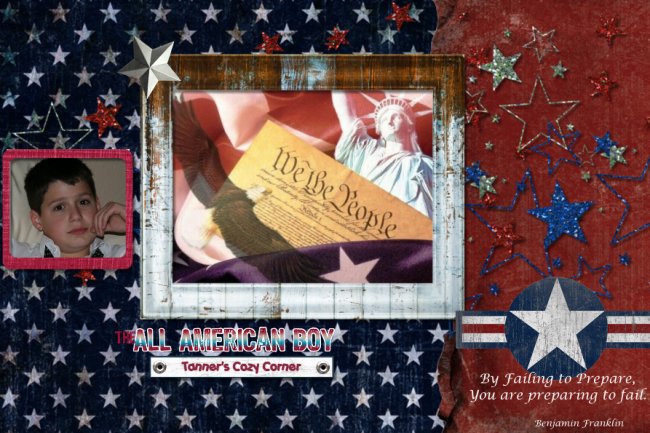 George Washington (February 22, 1732-December 14, 1799) served as the first national administrator of the United States of America. Or in other words, he was our first president. Besides national administration, there were two other key events in American history that would never have even happened without the brilliant founding father: (1) victory in the War for Independence (2) and the Constitutional Convention.
George Washington (February 22, 1732-December 14, 1799) served as the first national administrator of the United States of America. Or in other words, he was our first president. Besides national administration, there were two other key events in American history that would never have even happened without the brilliant founding father: (1) victory in the War for Independence (2) and the Constitutional Convention.Early Life
Washington's ancestry leads back to the Scandinavian Viking Founder, Odin. (I found this interesting.) His great-grandfather, John Washington, was the man who led the Washingtons to America. During the year 1657, John Washington moved to the Virginian Colony.
Family Tree:
George Washington (Virginia) Father:
Augustine Washington (Virginia) Father:
Lawrence Washington (?) Father:
John Washington (Virginia) Father:
Lawrence Washington (England)
He lived on the Pope's Creek Estate where he was educated by his father and half-brother.
As a young man he served as a surveyor for Baron Fairfax. In 1751, Washington and his half-brother, Lawrence Washington, traveled to Barbados in search of a cure for Lawrence's tuberculosis. Lawrence died in 1752 and Washington inherited some of his estate. When George Washington was 20 years old, he enlisted in the Virginia militia as Major, which is incredible and quite rare. In December of 1753, Governor Robert Dinwiddie asked Washington to send a British ultimatum to the French on the Ohio frontier.
The French and Indian War [Seven Years' War]
 In 1754, Washington was commissioned a lieutenant colonel by Dinwiddie and commanded to lead the militia to Fort Duquesne to drive out the French. With their American Indian allies, they attacked a group of 30 French scouts. However, Washington was overwhelmed at Fort Necessity by the French. After his terms of surrender, he resigned.
In 1754, Washington was commissioned a lieutenant colonel by Dinwiddie and commanded to lead the militia to Fort Duquesne to drive out the French. With their American Indian allies, they attacked a group of 30 French scouts. However, Washington was overwhelmed at Fort Necessity by the French. After his terms of surrender, he resigned.In 1755, Washington assisted General Braddock in the Monongahela expedition (also known as the Braddock Expedition). The Monongahela expedition was a major effort to retake the Ohio area from the French. General Braddock was killed in the battle, but Washington defeated the French and was promoted to colonel and commander of all Virginia forces.
In 1758, Washington served as a brigadier general during the Forbes expedition that urged the French to evacuate Fort Duquesne and Pittsburgh. Later that same year, Washington resigned and became a planter and politician.
Martha Washington
In New Kent County, Virginia, Washington met a widow from White House Plantation. Her name was Martha Custis Dandridge. They were married on January 6, 1759 at her home, known as the White House.
The War for Independence

On July 14, 1775, Congress created the Continental Army. Washington was appointed Major General and elected to the rank Commander-in-Chief.
In August 1776, General William Howe of the British lead a massive naval and land attack to take New York and the Continental Army engaged with the British in battle. This was the biggest battle of the entire Revolution and is known as the Battle of Long Island. Unfortunately, the British drove the Continental Army out of New York, leaving them in doubt. However, on Christmas of 1776, Washington led a counterattack across the Delaware River into Trenton, New Jersey, capturing 1000 Hessians. In January, they were the victors in a battle at Princeton. Another battle won by the British, was the Battle of Brandywine on September 11, 1777. After a couple of British victories, Washington trapped General Burgoyne at Saratoga, New York. After this victory, France entered the war as one of America's allies.
Washington's army camped at Valley Forge during December of 1777. They spent six horrible, freezing months there. 2,500 of their 10,000 died from disease and exposure to the cold. However, thanks to Baron van Steuben help, they came out of Valley Forge ready to fight. In 1778, the British evacuated Philadelphia but were attacked at Monmouth by Washington's army. The British were on their way to New York. Washington was stationed outside New York and destroyed over 40 Iroquois villages.
The French fleet trapped British troops on a peninsula near the city of Yorktown. Then the British surrendered at Yorktown on October 17, 1781, marking the end of the American Revolution.
In 1787, George Washington served as the President of the Constitutional Convention. The states ratified it, and the government was established. Then George Washington was unanimously elected the first president of the United States under the new Constitution. He served as President for two terms, as well as voluntarily added 'so help me God' to the end of the Oath of Office.
The Washington Cabinet
Office
Name
Term
President:
George Washington
1789–1797
Vice President:
John Adams
1789–1797
Secretary of State:
Thomas Jefferson
1790–1793
Edmund Randolph
1794–1795
Timothy Pickering
1795–1797
Secretary of Treasury:
Alexander Hamilton
1789–1795
Oliver Wolcott, Jr.
1795–1797
Secretary of War:
Henry Knox
1789–1794
Timothy Pickering
1795–1795
James McHenry
1796–1797
Attorney General:
Edmund Randolph
1789–1794
William Bradford
1794–1795
Charles Lee
1795–1797










